Introduction
ADATA has been producing computing components and accessories for over two decades and is a well-known entity in the PC component space. ADATA’s XPG (“Xtreme Performance Gear”) brand focuses on gaming hardware and accessories to boost your rig’s performance and looks.
On our test bench today (or, perhaps on my head for the past two-plus weeks) is the ADATA XPG PRECOG STUDIO Gaming Headset. It differentiates itself by using a 4.4mm balanced connector to improve sound quality over the common unbalanced 3.5mm connector. This is a wired headphone that also includes a mic boom for your conference calling and gaming enjoyment (Ed: This is a gaming headset, why are you talking about work?). It has a suggested price of $59.99, but check out our pricing widgets for current pricing at various retailers below.
XPG PRECOG STUDIO Overview
Photos
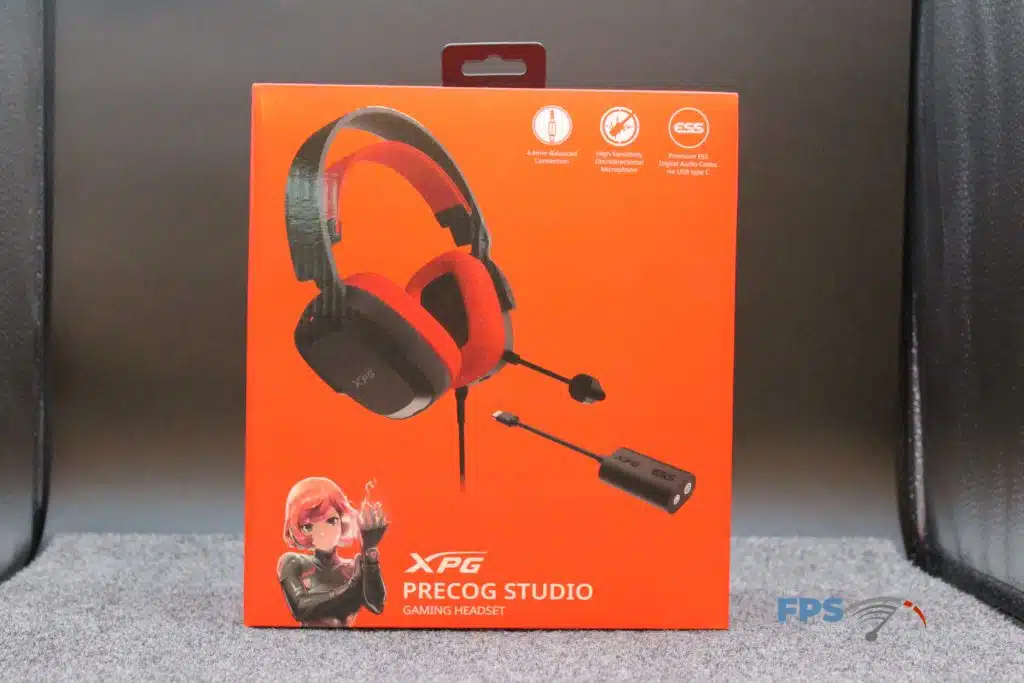
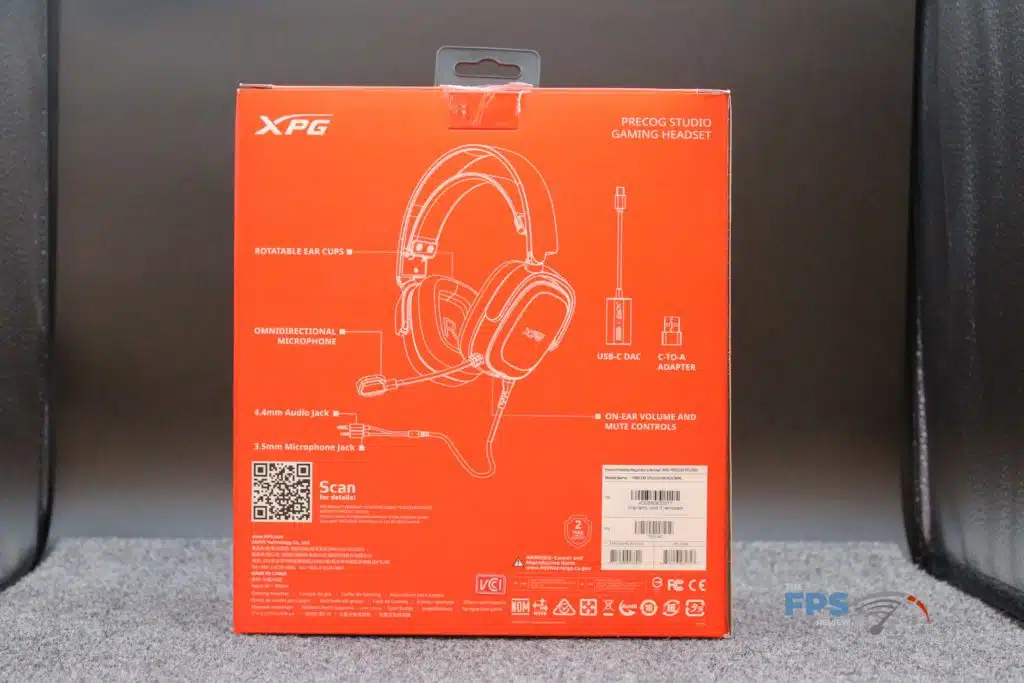
The XPG PRECOG STUDIO comes in an XPG-themed orange box featuring Mera, XPG’s brand ambassador, and images of what we’ll find in the box. The front of the box also lists three main features: the 4.4mm Balanced Connection, the High Sensitivity Omnidirectional microphone, and the Premium ESS Digital Audio Codec via USB Type C. On the rear of the box, we find a sketch of the headset that labels each of the features and components that we’ll find inside the box. Of note, a C-to-A USB adapter is included for those of us who have not ascended past USB-A on our rigs.
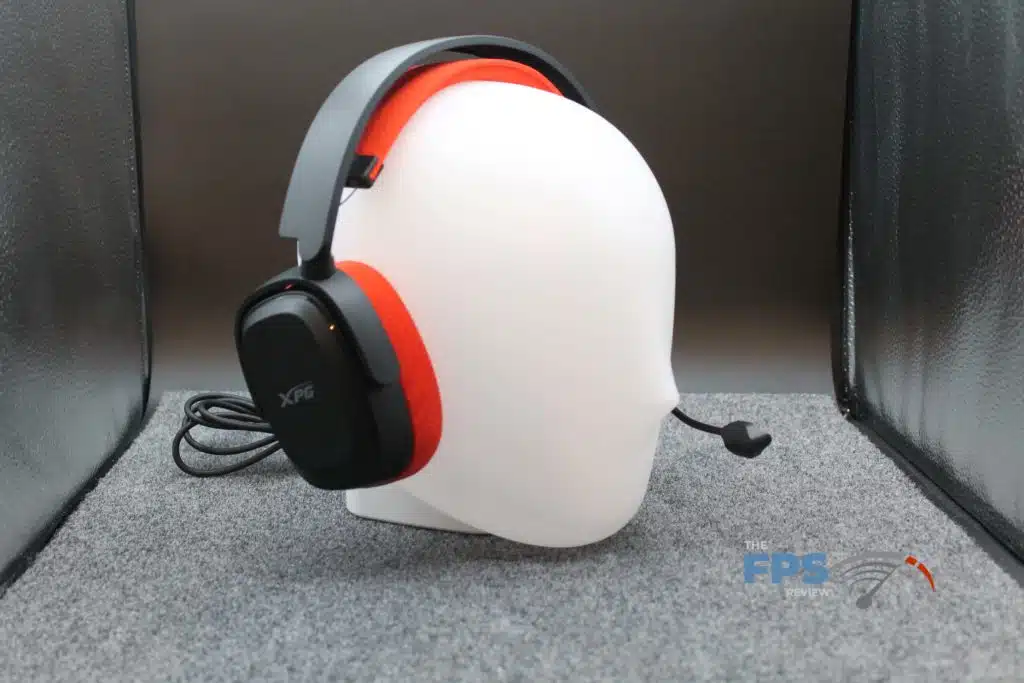
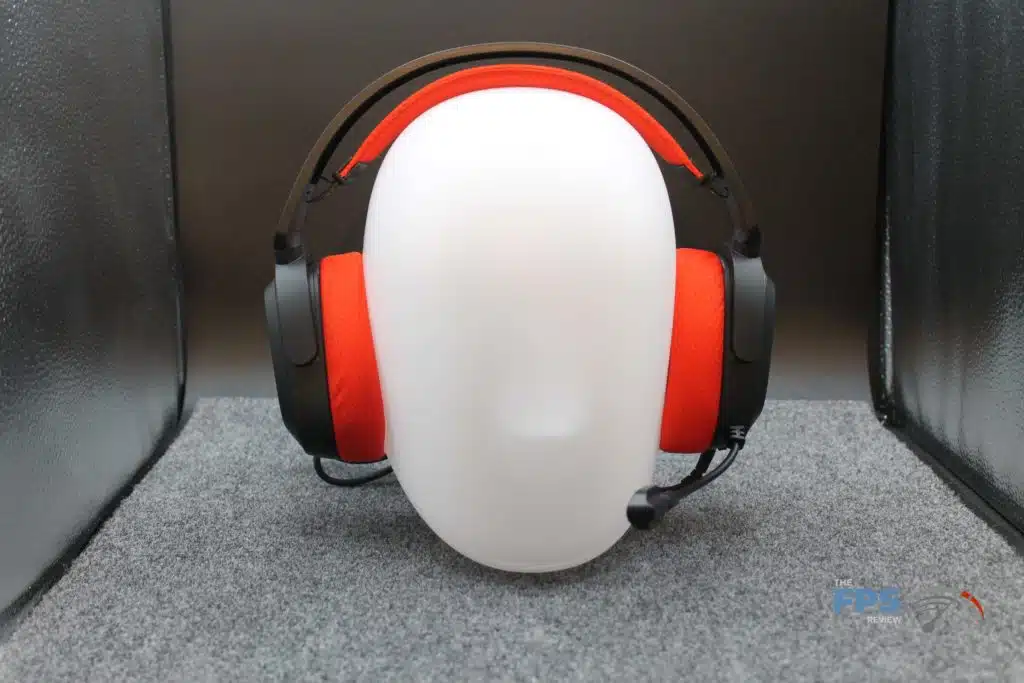
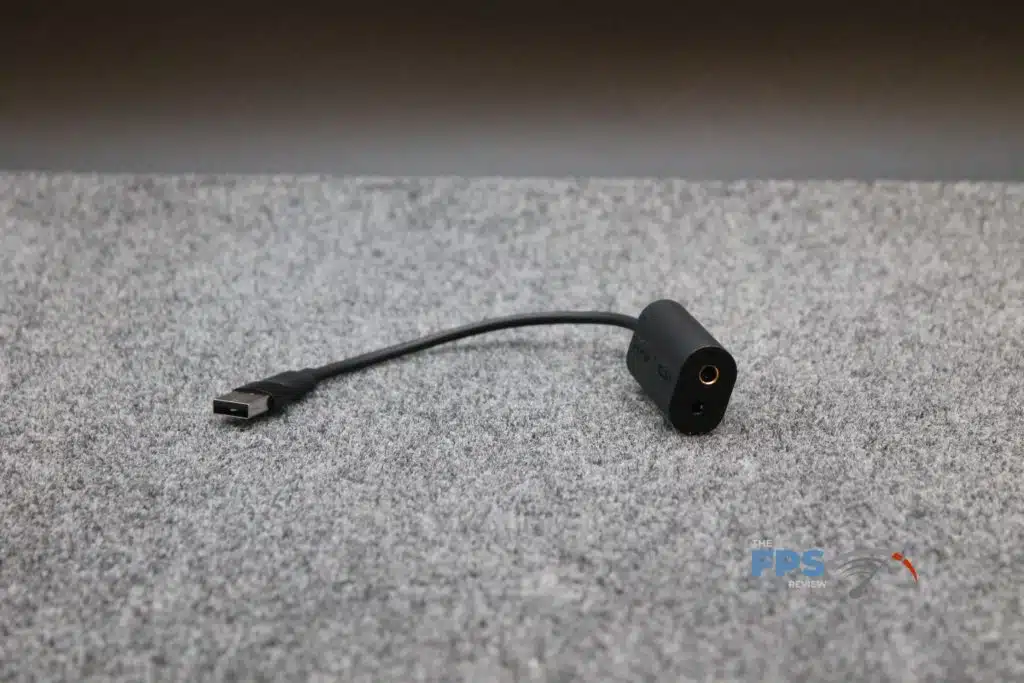
Opening the box, we find the XPG PRECOG STUDIO nestled inside along with a paper manual written in countless languages and a card with Mera stickers thanking us for our purchase. After pulling out the headset, we also found the USB-C DAC and a USB-C to USB-A adapter.
With the XPG PRECOG STUDIO out of the box, we found it to be primarily built from black plastic and utilizes a head strap to help fit the headset to your head. The ear cup padding is a comfortable red fabric that covers light foam cups.
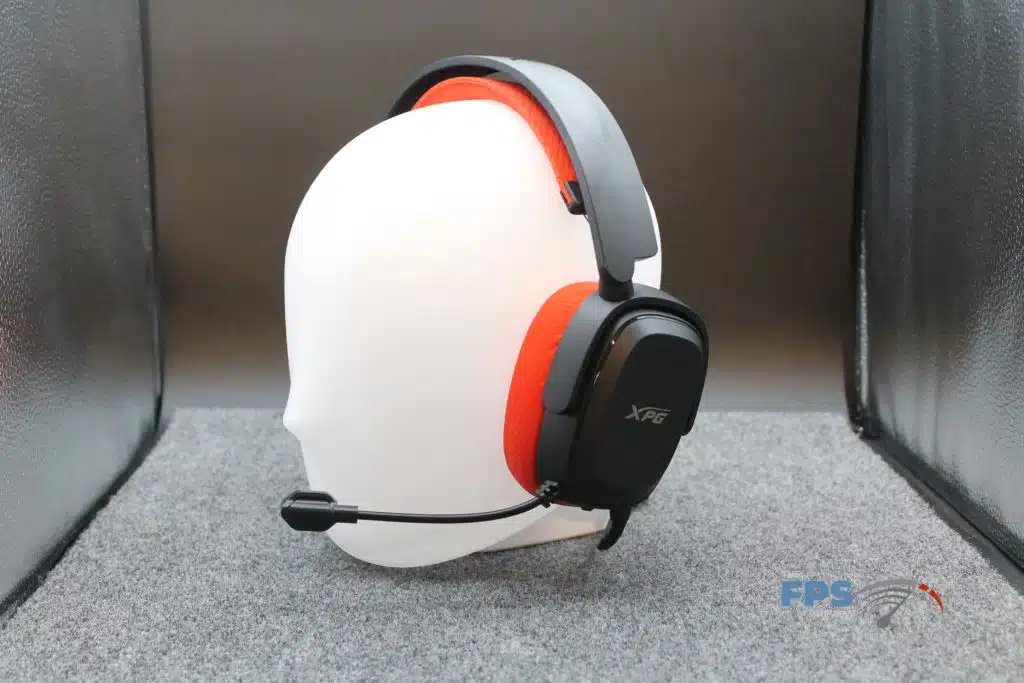
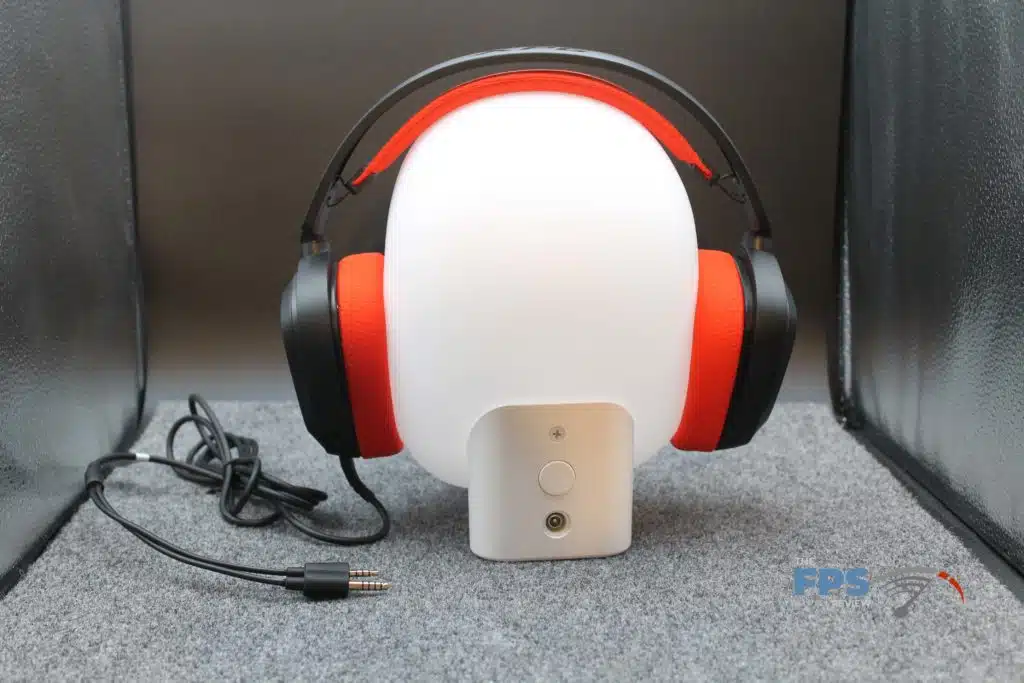
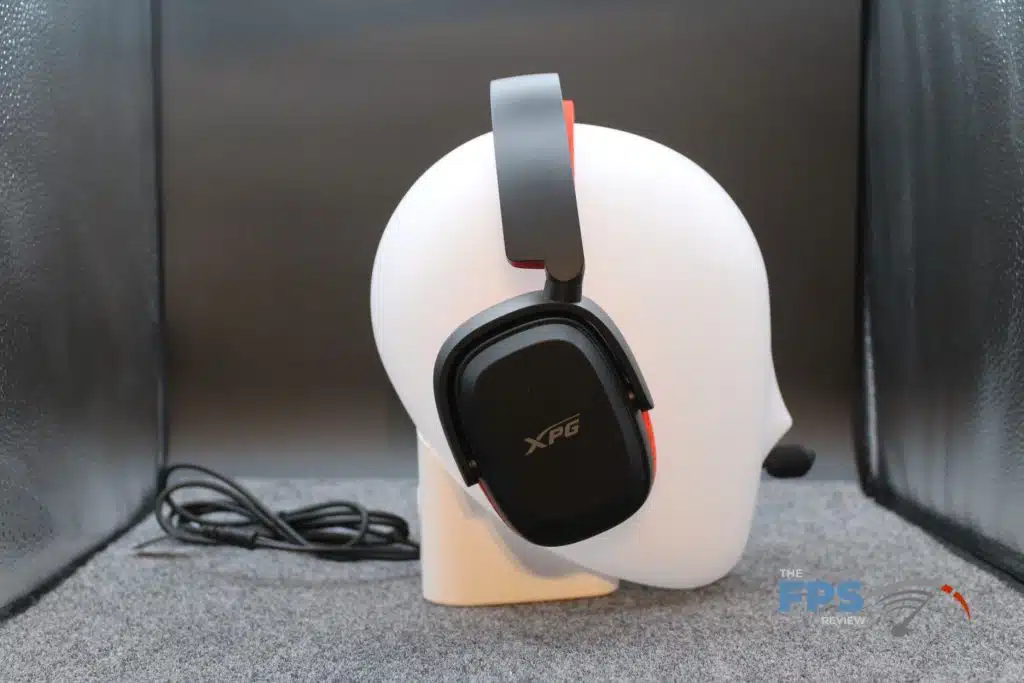
On the outside of each earcup, you’ll see the XPG logo. There is no RGB bling to report on this headset, however, I’d suggest the red fabric is more visible when on camera than the typical RGB bling is.
Hardware Features
Digging more into the hardware features, we note that the XPG PRECOG STUDIO has two different types of connections available – the first through a USB DAC that utilizes an ESS ES9260Q DAC and a Sabre 9601K Amplifier that provides a balanced 4.4mm TRRRS headphone and 3.5mm TRRS microphone jack. If your gear supports the balanced 4.4mm TRRRS connector, you can bypass the DAC and plug directly into your source, otherwise, you’ll need to acquire or fabricate an adapter. The use of the balanced audio jack is intended to achieve superior channel separation and eliminate crosstalk interference.
We’ve listed additional specifications provided by XPG in the table below.
| Feature | Description |
|---|---|
| Audio Driver | 50mm |
| Frequency Response | 20Hz – 20kHz |
| Impedance | 50 Ohms @ Not provided |
| Sensitivity | 101dB (+/- 3dB) |
| Mic Type | Omni-directional |
| Mic Sensitivity | 100Hz – 8000Hz |
| Dimensions | 216mm (L) x 192mm (W) x 91mm (H) |
| Weight | 300g |
| Warranty | 2 years |
| DAC | ESS 9260Q DAC Sabre 9601K Amplifier 32bits/96kHz Input: USB Type C |
Software Features
From a software features perspective, the XPG PRECOG STUDIO utilizes a built-in Windows audio driver and the usual built-in Windows audio control mechanisms.
Our Thoughts
Comfort
After wearing the XPG PRECOG STUDIO over two weeks which included a variety of lengthy conference calls back to back as well as gaming sessions, they were found to be quite comfortable. They were light to wear and the cotton-padded ear cups did not generate unwarranted sweating around the ear. They were also lighter on the head than the wireless headsets that I’m used to using because they obviously have no battery to weigh them down.
Music
I fired up a couple of my favorite tracks to get a feel for the overall capabilities of the headset and some of the EQ options. Tracks were either sourced through CD rip (320kbit to MP3) or from Spotify (320kbit). In comparing the XPG PRECOG STUDIO to the various headsets (at typically higher price points than the XPG PRECOG STUDIO) that have come across my desk, we found the out-of-the-box experience to be lacking. Some amount of curve optimization is needed to bring out the best in the music – in the absence of the software to do that, we found the setting for the Windows “bass boost” to add a significant amount of depth to the tracks.
- Star Wars Return of the Jedi – The Duel Begins (CD)
- Mike Viola – Scientist Alexis (Spotify)
- Weezer – Only in Dreams (CD)
- Fleetwood Mac – Big Love (CD – The Dance)
- Rick Astley – Never Gonna Give You Up (Spotify)
With the Bass Boost, I found the above songs to provide a good listening experience, with mostly clear vocals and separation between the parts of the songs. Bass response, while rather poor with the stock configuration significantly improved with the Bass Boost. The XPG PRECOG STUDIO holds up well against more expensive headsets, however, there’s still a clear difference in music quality that favors more expensive headsets.
To better explain the difference, The Duel Begins is the music backing the final duel in the Emperor’s throne room in “Star Wars Episode 6: Return of the Jedi”. It starts off softly and builds in intensity combining chorus and orchestra to the point where it can easily send chills down your spine at its peak, finishing with a low bass boom (as the movie switches to a different scene at that point). It’s an emotional piece of music, and the better the hardware is, the better that emotion is conveyed to the listener – the XPG PRECOG STUDIO delivered some emotion, but not nearly as much as more expensive headsets do.
Gaming
In gaming sessions, the XPG PRECOG Studio performed well letting me hear everything that was going on during my gaming sessions. Gaming with the Bass Boost turned on ended up muddling a lot of the sound, so we found it to be better to run in gaming mode with the Bass Boost off. Having EQ functionality would have been helpful to better balance the in-game audio to make the headset sound its best.
Microphone
The microphone worked as expected in gaming and conference call scenarios. Feedback was positive compared to wireless headsets that I’ve historically used but of course, comparing it back to back with a wired Blue Yeti microphone, the Blue Yeti sounded better to all.
The microphone boom is flexible, allowing you the ability to position it in an infinite number of ways to match the format of your face and preferences for distance to your mouth. There is no quick way to stow the microphone if you’re not using it – you can bend it away from your face or just leave it in place, but it’s not getting folded up into the rest of the headset.
There is also a physical switch at the base of the earcup containing the microphone boom. The switch will mute the microphone’s output, however, in practical use while gaming or during a call, the other parties will probably hear you fumbling with it until you get the switch off.
Conclusion & Final Points

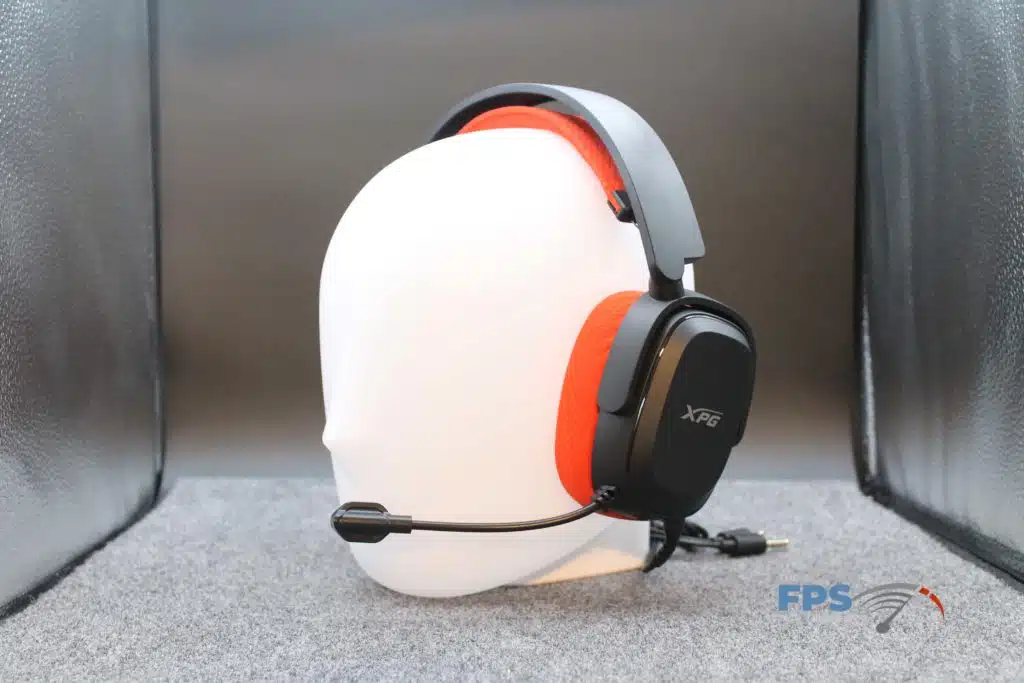
Today we took a look at the ADATA XPG PRECOG STUDIO Gaming Headset and used it in our day-to-day life over the past couple of weeks that spanned work, gaming, and a light amount of rickrolling. The overall performance of the headset when considering sound and microphone quality was quite good for its expected $59.99 MSRP. If you’re in the market for an affordable, wired headset, the XPG PRECOG STUDIO should absolutely be on your shortlist of options to consider.


